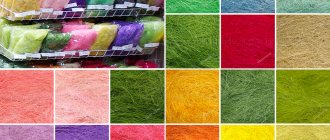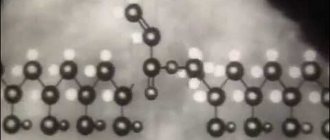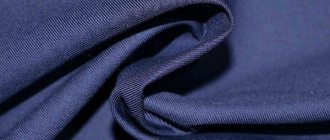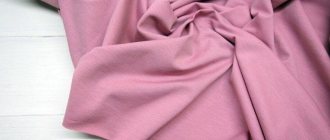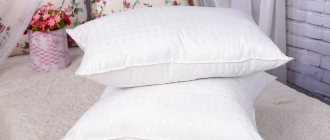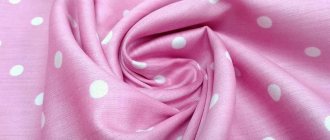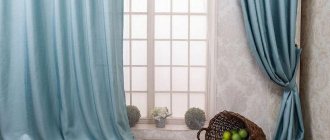Many needlewomen who are interested in new types of materials may have often heard about such a natural fiber as sisal. Few people know what this material actually is. Where does it come from, what can be made from it?
In fact, sisal is a completely natural plant fiber. It is produced in Mexico and Latin American countries. People have liked its properties since ancient times. Products made from sisal came to Europe for the first time only in the 16th century. Sea ships from America arrived in Spain, carrying unusually strong ropes.
People did not yet know what sisal was, but even then they understood its value. Since then, of course, natural fiber has been actively replaced by synthetic analogues, but the production of sisal in the world is still quite developed. The world's first producer of this raw material is Brazil. Tanzania, Mexico and Colombia are not far behind.
In the article we will look in detail at what sisal is, what plant it is produced from, how it happens, what can be made from this material, and how to work with it in our time.
The secret of the plant
Sisal is obtained from the long, narrow-pointed leaves of a plant belonging to the genus Agave; more precisely, its name is: Agava sisolana. Nowadays, the name is increasingly simplified and the plant is also called sisal. Good full-fledged agave bushes grow in 5 to 7 years. It is during this period that the size of the leaves reaches two meters. A thorn grows at the very tip of the sharp leaf. The leaves are dense, sword-like. One rosette of agave can contain up to 250 leaves of different lengths.
Interesting fact! In the last year of its 10-year existence, a long arrow with a flower is thrown out from the center of the rosette of leaves, sometimes its size reaches 6 meters. After this, the plant gradually withers and dies. This type of agave does not produce seeds, since the plant is a hybrid. You already know what sisal is, now let's look at how strong threads are made from leaves.
History of fiber use
Sisal is obtained from the leaves of the plant. Such coarse fiber was previously used in shipbuilding. Ropes and ropes were made from it.
In the 16th century, an American ship from the Southern continent arrived on the shores of Spain. He dropped anchor in the Mexican port of Sisal. The ropes on the ship were so strong that they received a separate designation from the maritime community based on the name of the port.
Today, sisal is produced in areas where agave grows. It is imported from the following countries:
- Brazil (first place in sisal production);
- Tanzania;
- Mexico;
- Colombia.
Now there is a synthetic imitation of this fiber in the world. Therefore, when purchasing, you should pay attention to its naturalness.
Sisal is obtained from leaves using special machines that crush the plant mass. After separation, the fibers are washed, sun-dried, and carded with large brushes. This makes it long and elastic.
Natural fiber is always shiny and yellowish. It can be painted in different colors, but does not lose its shine.
If you examine sisal for its composition, you can find cellulose, lignin, pectin and other substances. Many useful and interesting things are made from sisal; the fiber is also used as a base for needlework.
How is the fiber obtained?
Agave grows in a hot subtropical climate with an average growing temperature of +25°C. The leaves are collected by men, cutting them off with long machetes near the base of the rosette, then they are beaten and the dense part is divided into small pieces. The leaves contain incredibly long and strong fibers.
There are regions, for example, some plantations in Tanzania, where all manipulations are still done by hand. In more advanced countries, decortication machines are used for this purpose, which break and crush the leaves. However, long fibers are pulled out by the hands of workers.
Next, the raw fiber is thoroughly washed to separate the remains of the plant and hung to dry on long racks with stretched ropes. Then the fibers are combed out manually with brushes. The pulp of the leaves is also used. It is dried and made into fertilizers. In the photo, sisal is being pulled out from inside an agave leaf. It turns out a long bundle of individual strong threads.
Properties of sisal rope
The fibers of the plant produce a coarse and rather thorny rope, since no special processing is used in production. They make it in different thicknesses - from deck ropes to thin twines.
Manufacturers of ropes and cables love sisal fiber for the following properties:
- durability;
- extraordinary strength;
- light natural shade of fibers (jute is much darker);
- rigid structure (this is why sisal ropes are often used to make stands for cats to sharpen their claws; in pet stores you can touch this material);
- however, its cost is higher than that of the jute analogue of natural ropes.
LiveInternetLiveInternet
Toys made from this material look like they are alive: cute, spontaneous, each with its own “character”. What kind of magical material is this, so pliable and plastic? – The answer to this question will probably surprise many: these cute bunnies, bears, and cats are made of sisal, which is widely used in floristry and other hand-made areas.
Sisal
– natural material. It is made from the fibers of the agave plant, which grows in tropical countries. The homeland of agave is Mexico. It was from the name of the Mexican port – Sisalna – that the word “sisal” came into use. With the discovery of the American continent, agave settled in many countries. Nowadays, the largest exporters of sisal are Tanzania, Kenya, Angola and Brazil.
Sisal is produced, as a rule, without chemical treatment: special machines crumple and crush the leaves, resulting in the separation of fiber, which is then washed, dried in the sun and combed. Natural threads are shiny and yellowish in color. Sisal fibers are easily dyed in various colors.
Sisal fiber has long been used in industry and navigation. Sisal rope is durable, does not accumulate static electricity, and most importantly, does not deteriorate from water and lasts quite a long time. In modern production, sisal is the basis for rugs, floor coverings, packaging materials, brushes, ropes, as well as toys and other items for animals. In addition to fibers, other parts of the plant are also used. Wax, citric acid, medicines, and paper are made from them.
Currently, sisal is widely used as a material for interior decoration and is used in floristry and other types of decorative arts. Its possibilities are not limited: it is a very pleasant to the touch, pliable and at the same time hard and durable material. Sisal fiber looks natural and original due to its natural origin. In addition, sisal is an environmentally friendly product. On sale you will find sisal in the form of individual fibers, as well as pressed into a thin sheet. The relatively low price makes it possible to use sisal as a filling for packaging and wrapping material.
Handmade craftsmen are finding more and more diverse uses for sisal. In addition to the usual additions to bouquets and bases for collages, this material is used in scrapbooking and in the manufacture of various toys and decorations. In hobby stores you can see ready-made frames made of sisal - hearts, rings - this shape can be decorated as desired. To make sisal figurines, a frame (usually made of rigid wire) is usually used, on which the fibers are wound. The figurine is given the desired shape and then secured with threads or thin wire.
You can create your own canvas from sisal threads. To do this, sisal must be divided into thin fibers and spread on plastic wrap. The color and arrangement of the fibers depends on your imagination. Feathers, leaves, and flower petals can be included in the texture of the canvas. The entire structure must be generously lubricated with vinyl (wallpaper) glue, then covered with a second sheet of film and put under the press for 3 days. If you need a volumetric composition, then the canvas is dried without a press. Using sisal, you can decorate any thing, and to obtain three-dimensional forms, use any suitable frame:
[/td]
https://blog.delki.ru/2012/12/sizal-naturalnoe-volokno.html
Why is it used in mattresses?
Many people have heard about filling good orthopedic mattresses with coconut coir. However, it is sisal that is highly valued. The fibers have better elasticity and elasticity. Even with prolonged use of the mattress, the strength of the sisal fibers is maintained.
This material allows air to pass through perfectly, so moisture does not remain in the mattress. Sisal itself does not absorb moisture, is constantly dry, has antistatic properties, and thus does not attract dust particles at all. Even a small layer of sisal between the filling materials in mattresses allows all components to “breathe.”
Filler properties
In an orthopedic mattress, sisal plays the role of a moderately hard (closer to hard) filler. Unlike coconut coir, it does not have “woody” notes. Compared to the same coir, it is a softer and more elastic material.
Here you can also add elasticity (does not press for a long time), antistatic (does not attract dust), strength and wear resistance. Thanks to good breathability, the flooring “breathes”, quickly evaporates moisture, does not retain odors, which allows the bed to always remain dry, warm and fresh. It seems that the only disadvantages include the high price of mattresses with sisal flooring!
Reference! Agave fibers (compared to coconut fibers) are longer, so the durability of the material is higher.
Sisal fiber is an excellent sound absorber. The flooring does not accumulate static electricity. Another remarkable feature of the material is that it does not retain moisture. This is important, since a sleeping person’s body can lose 500 ml of moisture or more during the night (depending on the time of year). Sisal fiber absorbs moisture and quickly releases it back (evaporates), while many materials of synthetic origin continue to retain and retain it for some time.
Reference! Although agave is not a member of the cactus family, sisal is sometimes called "cactus coir." Apparently, this idea was formed on the basis of some external similarity of agave with cacti and the rather prickly edge of the fleshy, hard, upward-pointing leaves.
Sisal flooring can be used by manufacturers as a base, or in combination with other, softer flooring (usually latex, memory foam).
Crafts made from sisal ropes
Handmade craftsmen have found a way to use even such thorny ropes as sisal. In addition to the already mentioned cat fun, you can make these small baskets for small items. It is enough to select a dense bottom, for example, from corrugated cardboard packaging and, using strong PVA glue, attach a rope in a circle, winding it around a base, for example, a tin can.
The ears are created at the end of the work by bending a thick sisal rope with your fingers. Do not forget to leave the end freely lying on the table at the beginning of work. This is the tail of a mouse. All that remains is to attach the cardboard eyes and button nose. The mustache can be sewn on with a needle using black nylon thread.
How is sisal used in needlework?
You already know what sisal is made from. Now let's look at what processed fibers for needlework look like. They are sold in craft stores. They can be purchased in rolls, pressed sheets or in skeins. Ready-made sheets are expensive, so craftsmen often produce them themselves. Read on to find out how to do this.
You need to take two glasses or mirrors, the main thing is that the surface of the bases for gluing is smooth and even. Then use a brush to spread PVA onto the bottom glass in an even layer. Then the sisal threads are laid out in any order. You can make the sheet airy or dense at your discretion. At the end, a second glass is placed. It is advisable to press the two surfaces together with something heavy. You can put a couple of books. After some time, the glass is removed, and the resulting sheet itself is perfectly separated from the surface.
Sisal crafts
Using rolls of different colors, you can cut out any shapes with scissors. For example, such wonderful apples will decorate kitchen furniture. You can cut out flowers and glue them onto a flower pot.
Such durable rolls can be cut and sewn into voluminous crafts. For example, a princess dress will be made from a cone; all that remains is to sew the doll’s arms and face from the fabric. Thanks to the hardness of the material, the craft will stand perfectly on a shelf in a child’s room. A green cone decorated with small details will be a New Year's craft.
And from the threads themselves you can twist small balls and stick them on the base. You will get an original Christmas tree, as in the photo above.
Topiary made from sisal balls
Recently, topiaries made from a variety of materials have become very popular. The craftsmen also paid attention to sisal, which is beautiful to work with. Small balls are twisted from the fibers by hand. They should not be dense, but airy. All the details are glued to the foam ball one by one, and the craft is decorated with additional decorative elements. These could be flowers or beads, small artificial apples or pears.
The base of the stem of such a tree is strengthened with a solution of gypsum or alabaster. So that it is not visible, after drying, sisal fibers are laid out on the frozen mixture in a free order.
Topiary made of sisal and flowers
When starting to make topiary with your own hands, you need to look around and understand what else might be useful in the manufacturing process. You can decorate it not only with decorative elements suitable for these purposes, but also with fruits or flowers. The latter option is more preferable, however, over time, fresh flowers tend to fade and lose their appearance. The only way out of this situation is to use their dried or artificial equivalents.
In this case, the flowers must be chosen correctly, based on the following rules:
- The chosen option should be a perfect match in color and style.
- It is better to choose small flowers so that the topiary does not look too crowded.
- Before installation, it is better to remove the stems of the flowers.
Mattings on the floor
Real craftsmen can weave baskets, coasters for cups and a hot kettle from ropes. And how durable and strong sisal carpets are.
This coating not only has a decorative function, but also perfectly preserves the floor. After all, as we described earlier, sisal allows air to pass through and does not absorb dust. But, of course, the reader already understands that such a thing will cost a lot. But it's worth it, believe me!
The article describes how and where sisal grows, how the fiber is produced, and what is made from it. You can also try to work with such interesting material.
Sisal floor covering: its features
Sisal is a rolled material that is similar in appearance to a mat woven from bamboo shoots.
Sisal flooring is the same fiber, but obtained from the leaves of the agave plant, a Mexican plant. And sometimes other natural fibers are added to this coating.
Sisal - environmentally friendly and modern
Pure sisal flooring is a rough and very durable material. Therefore, to make this floor covering wear-resistant, manufacturers add jute to it, and wool to reduce roughness and improve thermal insulation properties.
Sisal cover with added wool
They produce a similar latex fabric on a backing that provides protection from dust penetration and a tight fit of the sisal covering to the floor. And, in addition, sisal with a latex backing increases the service life of the coating and simplifies its installation.
Of course, sisal is not the only type of flooring. A complete overview of coatings by material has been prepared for you by experts on our website.
How to choose the right flooring for different rooms? The answer to this question awaits you in the article at:
Let our marketing review “Where to buy flooring?” will become your guide to the world of carpets, parquet, laminate and sisal, including
Sisal flooring has a rich color palette and texture, which makes it not just an environmentally friendly material, but also a decorative one.
